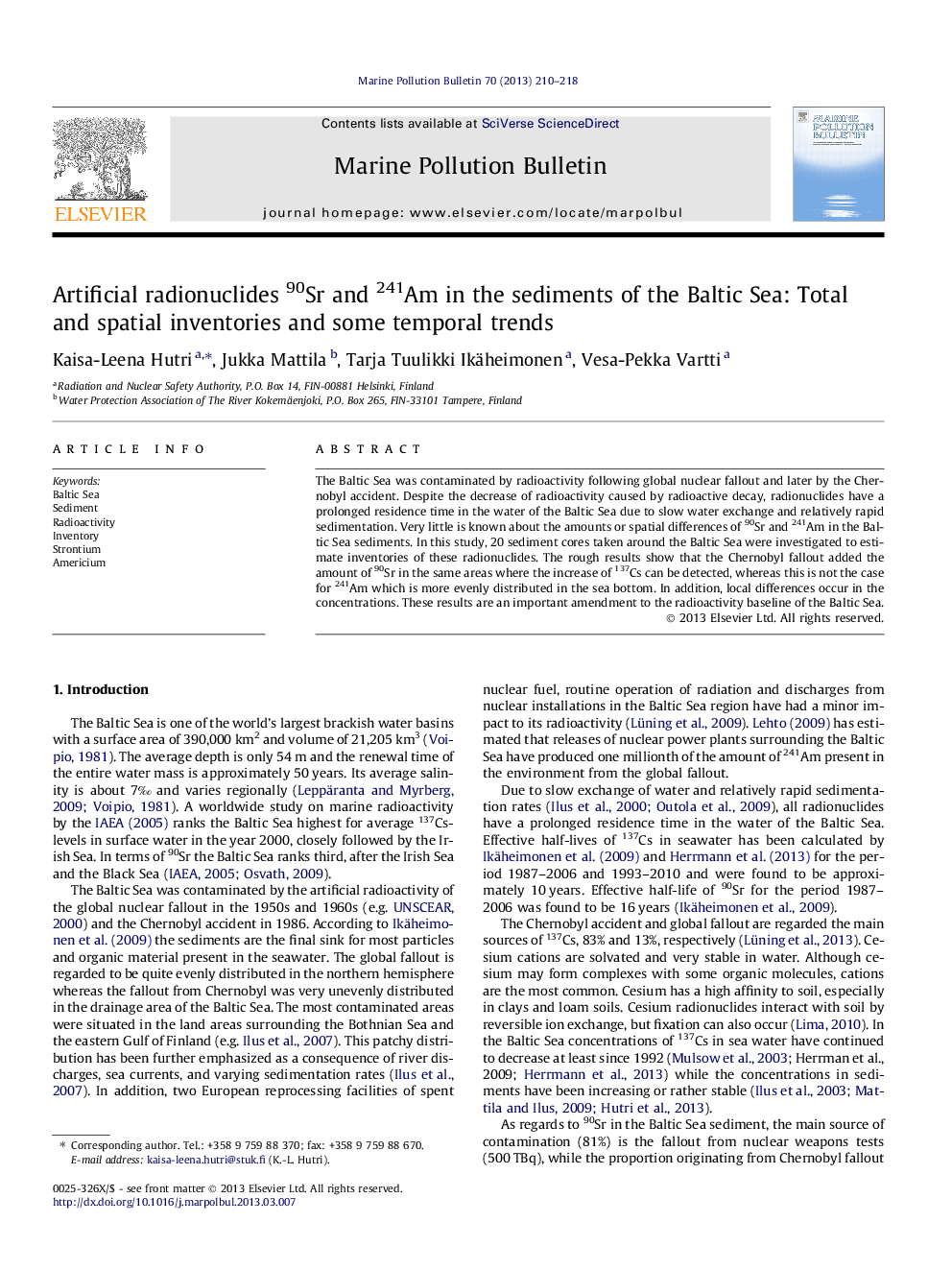| Article ID | Journal | Published Year | Pages | File Type |
|---|---|---|---|---|
| 6359929 | Marine Pollution Bulletin | 2013 | 9 Pages |
Abstract
The Baltic Sea was contaminated by radioactivity following global nuclear fallout and later by the Chernobyl accident. Despite the decrease of radioactivity caused by radioactive decay, radionuclides have a prolonged residence time in the water of the Baltic Sea due to slow water exchange and relatively rapid sedimentation. Very little is known about the amounts or spatial differences of 90Sr and 241Am in the Baltic Sea sediments. In this study, 20 sediment cores taken around the Baltic Sea were investigated to estimate inventories of these radionuclides. The rough results show that the Chernobyl fallout added the amount of 90Sr in the same areas where the increase of 137Cs can be detected, whereas this is not the case for 241Am which is more evenly distributed in the sea bottom. In addition, local differences occur in the concentrations. These results are an important amendment to the radioactivity baseline of the Baltic Sea.
Related Topics
Physical Sciences and Engineering
Earth and Planetary Sciences
Oceanography
Authors
Kaisa-Leena Hutri, Jukka Mattila, Tarja Tuulikki Ikäheimonen, Vesa-Pekka Vartti,
